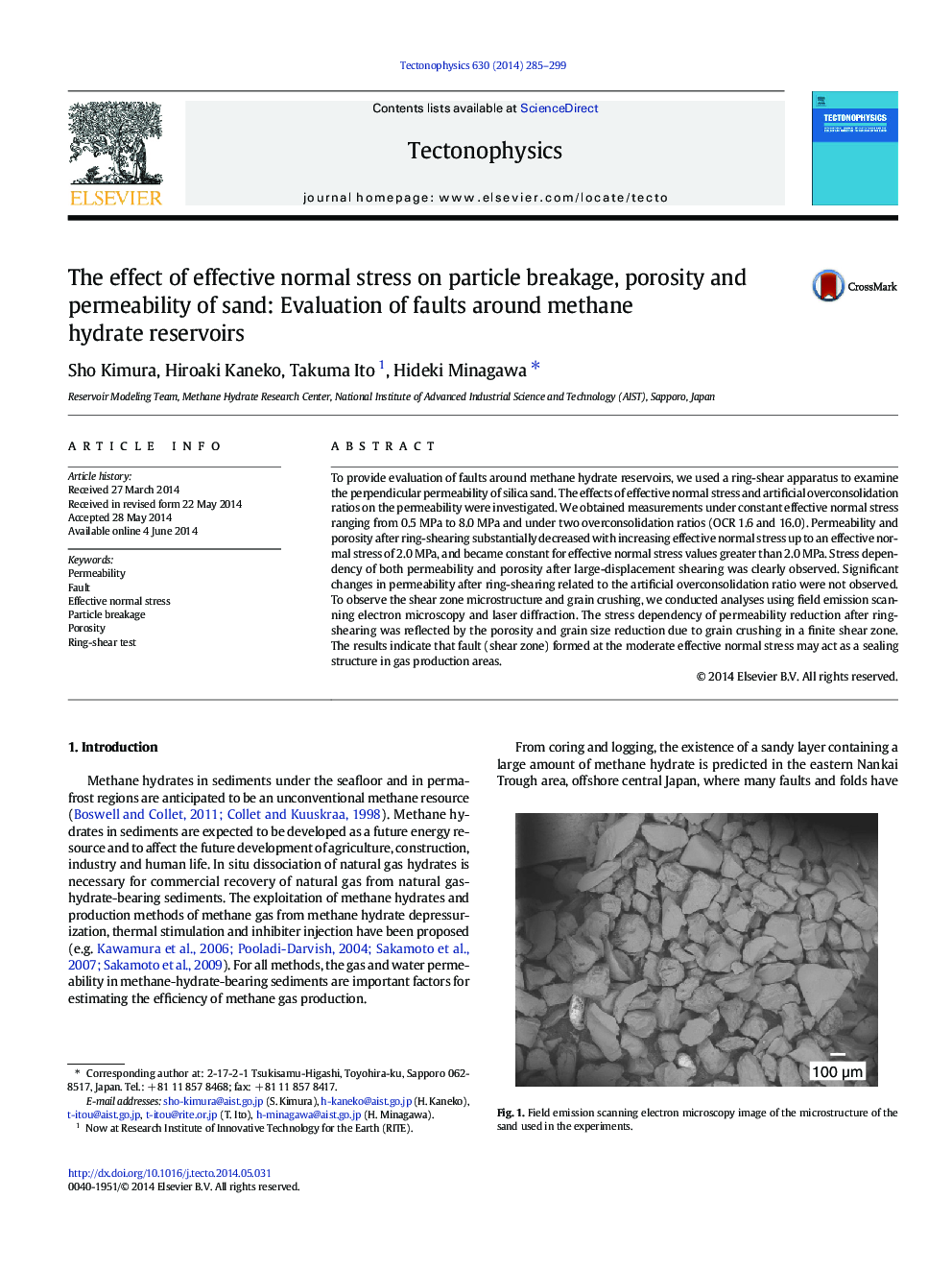| Article ID | Journal | Published Year | Pages | File Type |
|---|---|---|---|---|
| 6433712 | Tectonophysics | 2014 | 15 Pages |
â¢Permeability and porosity after large displacement shearing are stress-dependent.â¢Differences in permeability at all tested OCR values are not significant.â¢Permeability reduction is associated with grain size and porosity reduction.
To provide evaluation of faults around methane hydrate reservoirs, we used a ring-shear apparatus to examine the perpendicular permeability of silica sand. The effects of effective normal stress and artificial overconsolidation ratios on the permeability were investigated. We obtained measurements under constant effective normal stress ranging from 0.5Â MPa to 8.0Â MPa and under two overconsolidation ratios (OCR 1.6 and 16.0). Permeability and porosity after ring-shearing substantially decreased with increasing effective normal stress up to an effective normal stress of 2.0Â MPa, and became constant for effective normal stress values greater than 2.0Â MPa. Stress dependency of both permeability and porosity after large-displacement shearing was clearly observed. Significant changes in permeability after ring-shearing related to the artificial overconsolidation ratio were not observed. To observe the shear zone microstructure and grain crushing, we conducted analyses using field emission scanning electron microscopy and laser diffraction. The stress dependency of permeability reduction after ring-shearing was reflected by the porosity and grain size reduction due to grain crushing in a finite shear zone. The results indicate that fault (shear zone) formed at the moderate effective normal stress may act as a sealing structure in gas production areas.
